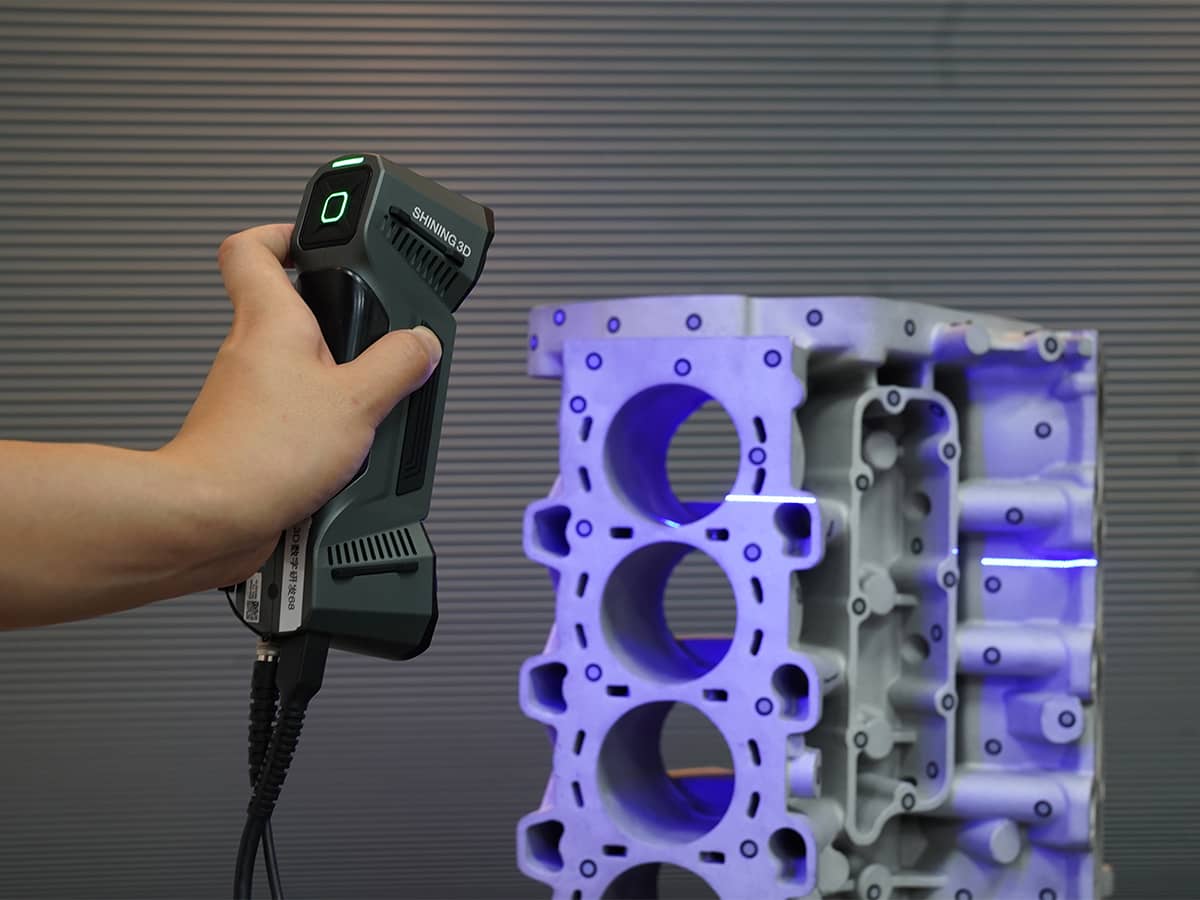3D scanners
- Handheld or stationary 3D scanners,
- Desktop and high-precision 3D metrology scanners,
- The latest 3D scanners on the market with an outstanding price-performance ratio,
- Professional and affordable digitisation solutions.
MORE ABOUT 3D SCANNERS
Medicine
Dental
Consumer products
Education

The purpose of 3D scanners
- Reverse engineering
- 3D measurements
- Quality control
- Product customisation
- Product development
- Computer graphics
- VR & AR
- Simulations
FAQ - 3D SCANNERS AND 3D SCANNING

In the market, there are various types of desktop and metrology 3D scanners that differ in how they capture 3D data. Some of them are:
- Laser,
- Structured light,
- Photogrammetry,
- Handheld,
- CMM
3D scanning offers applications in various fields, such as:
- Reverse engineering: designing and developing new products or modifying existing ones,
- Quality control in manufacturing: monitoring the quality of parts, molds, or tools during the manufacturing process,
- Architecture and construction: assisting in the design and planning of new structures.
- Art and culture: creating digital replicas of artworks and artifacts, enabling their preservation and detailed study without risking damage to the originals,
- Medicine and dentistry: creating patient-specific models, prosthetics, and implants,
- Entertainment and media: creating 3D models of characters and objects for use in movies, video games, and other forms of media.
You can read more about the utility of 3D scanning here.
The time required for 3D scanning of an object is influenced by several factors:
- The size of the object,
- he complexity of the object,
- The type of 3D scanner,
- The requirements for capturing details.
You can capture a small and simple object in a few minutes, while 3D scanning of a larger and more complex object can take several hours.
Of course, we also offer 3D scanner rental services. We have a wide range of different 3D scanners available for various needs, so you will certainly find the right one. Many people become very enthusiastic about 3D scanning due to all the advantages and later implement this form of 3D technology into their business.
3D scanners have several common features with cameras. Cameras gather information about colors, while 3D scanners gather information about distance. The image projected by a 3D scanner determines the 3D position of each point.
The accuracy of our 3D scanners reaches up to 0.005 mm, placing them at the very top of quality. Usually, the accuracy requirements are not that high, which speeds up the entire 3D scanning process.
3D scanning is the process of digitally capturing an object. The result of 3D scanning is a CAD model.” It’s one of the fastest-growing 3D technologies that can enhance your competitiveness in the market. You can use the data obtained by a 3D scanner for reverse engineering or quality control..



